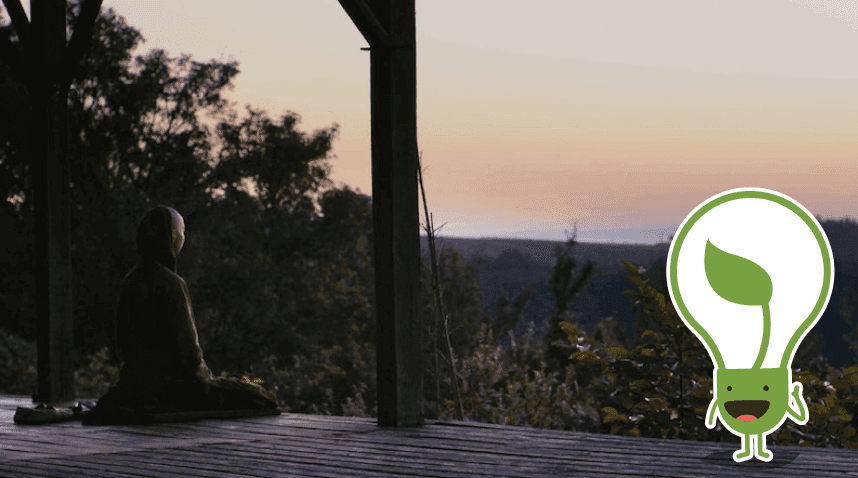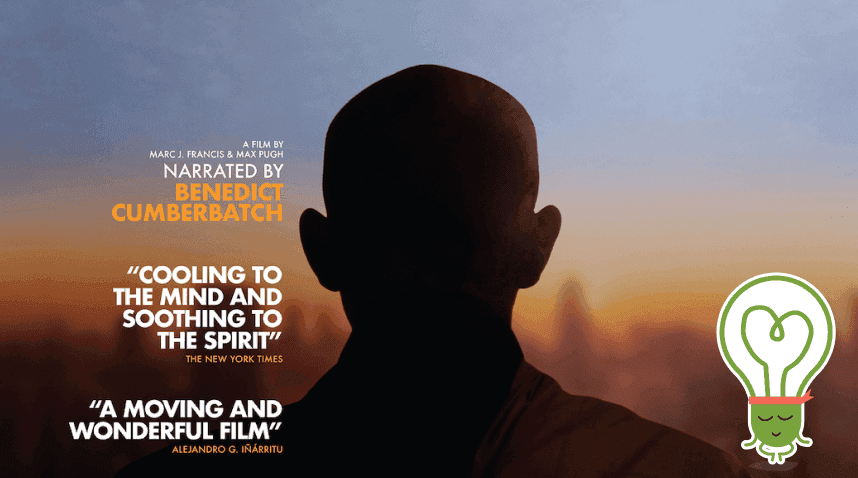TL;DR: This a reflection of a short movie about Thich Nhat Hanh, his teachings and community. Let’s walk together.
I had the chance to join the DAYWA (Dhamma Assembly for Young Working Adults) group for the Walk with Me movie screening some weeks ago. It’s a documentary showing a glimpse of activities in Plum Village, the community founded by Thich Nhat Hanh in France after he was exiled from Vietnam during Vietnam war time. It is a space for practitioners to immerse themselves in Zen Buddhism and the art of mindful living.
The directors perhaps wanted to appeal to a wider population, accompanying it with narration by Benedict Cumberbatch – with his deep voice and strong British accent. And I believe it may have worked when he read several lines from Thich Nhat Hanh’s journal throughout the movie.
There isn’t much dialogue or scripted lines like we’re used to in movies. It contains snapshots of activities, short conversations, moving images or sounds of nature.
What may seem like random scenes strung together, turns out to be a strangely beautiful flow of the story for me.
Captivating scenes
One of the earlier scenes left a deep impression on me: a group of laypeople on their knees, waiting in line for ordination. What’s striking isn’t so much the act of joining the ordained ones, but the deep sense of relief I see in their faces. Tears flooded down their faces, not from grief, but as if a huge rock had been lifted off their chests.
Witnessing such an intimate emotion, I can’t help but tear up and wonder to myself: when was the last time I experienced such a huge relief? What is weighing us down in life?
The bell chime every 15 minutes was cited by many of us as a good reminder for mindfulness – stop whatever it is and catch our breaths intentionally while listening to the bell for a few seconds. The resumption of the activities seems as if nothing has disrupted the motion; if not with the attitude of new experience.
Perish
“Friends want you to appear in the familiar form they know. But that is impossible. How could we continue to live if we were changeless? To live we must die every instance. We must perish again and again in the storms that make life possible.”
A few sentences with an immense reminder to the ever-changing nature of life: we’re not truly living if we try to fix part of us from others’ memory of us and we can’t fix others based on our memory of them.
It also reminds me of one poem in Yung Pueblo’s book Clarity & Connection:
How can we have a real conversation if every time we speak I can see in your eyes that my words are not reaching you? They stop at a narrative you have created about me based on who I was many years ago.
A reminder to let go of the past – image and belief of something and someone. So we could be fully present with what is in front of us, even if it’s a version that we’re unfamiliar with or dislike about.
The movie wasn’t only filmed within the compound of Plum Village, but also journeys to the outside world to share Buddha’s teaching. It was interesting how the monks’ and nuns’ encounters in the U.S. (prison visit, park meditation, monk’s and nun’s visit of family) shine light on the many who don’t understand Buddhism.
The scenes showed how these monks and nuns patiently shared with those who’d like to listen, in a way relatable to them. It was almost funny how the prisoners seemed to be frightened or perhaps showing pity when the monk said monks/nuns do not hold possessions and don’t even hold their own money – as if to ask: who is the one living in jail? But who is the freer person – the one who chooses to drop things or who yearns for things being denied?
Final words

I’ve watched the piece for the second time to write this article and a third time to find meaningful scenes to include alongside and realise that I can ‘watch’ it with my eyes closed. The directors have inserted beautiful sounds of nature, chanting and singing, familiar yet unfamiliar words and melodies. This is the first time I’ve heard Namo Avalokistesvara being chanted alongside violin accompaniment – a new way to appreciate the words and embrace what it stands for.
One may expect to see more scenes with the Master himself. While Thich Nhat Hanh does make a couple of appearances in answering a question from a little girl (she’s feeling sad because her dog has passed away) and scenes covering his presence in the hall, there are limited scenes of him. His teachings and messages are cleverly transmitted through the actions and energies of his students; even in mundane activities like (mindfully) sipping a small cup of tea.
In summary, this may not be the typical movie or documentary.
One needs to appreciate and trust the flow enfolding every new second, as our self-held expectations and mind search for particular meaning or story, which is the result of a mind habitually trained at grasping. We can probably practise what Thich Nhat Hanh himself taught and come home.
Key Reflections:
- Keeping ourselves open to new activities with a new group of people could result in a positive experience
- The group may be watching the same film, but the message that strikes us individually may be different depending on our internal world
- Lengthy script isn’t necessary to transmit a message that is well-woven in the visual, audio and tone of the piece


